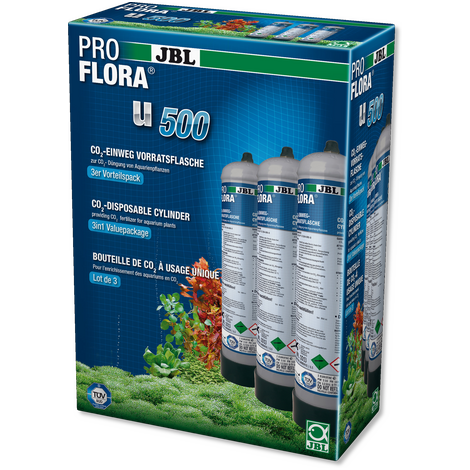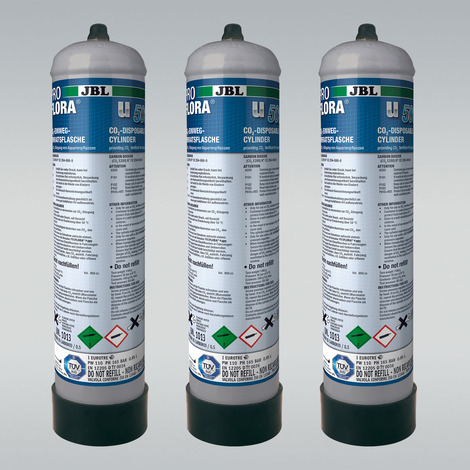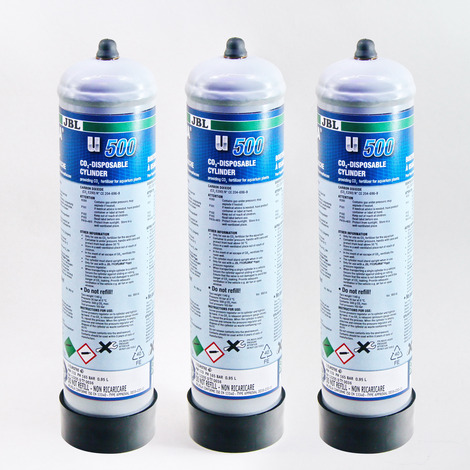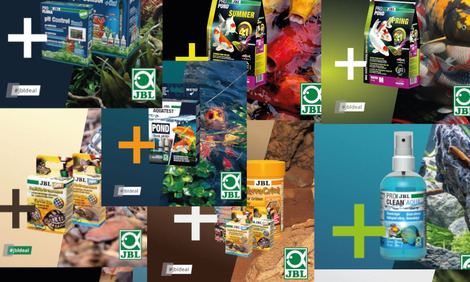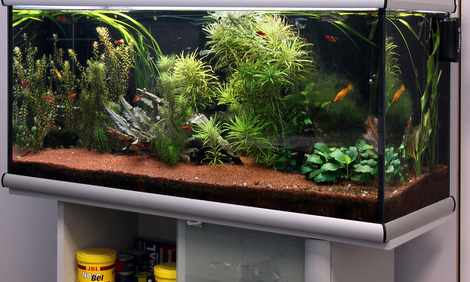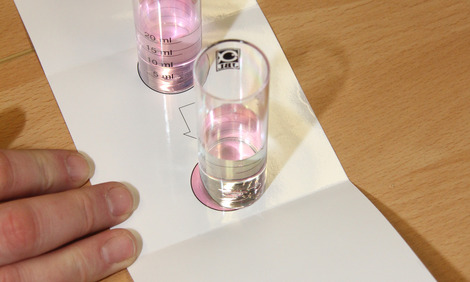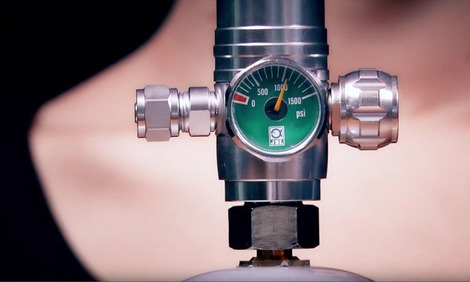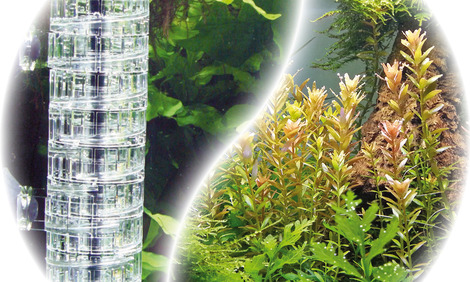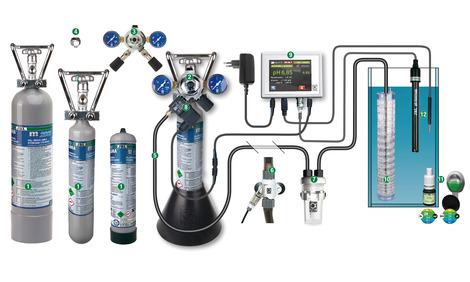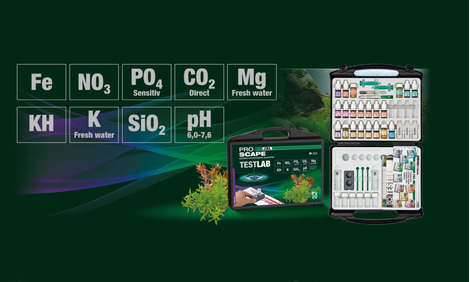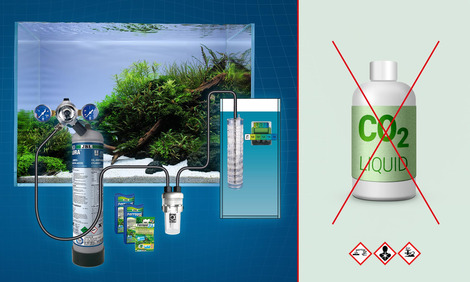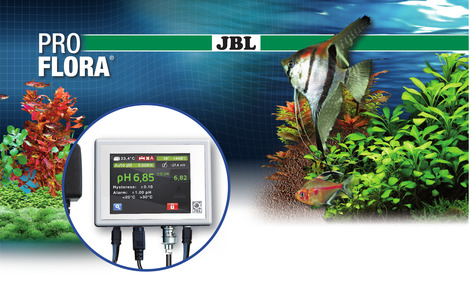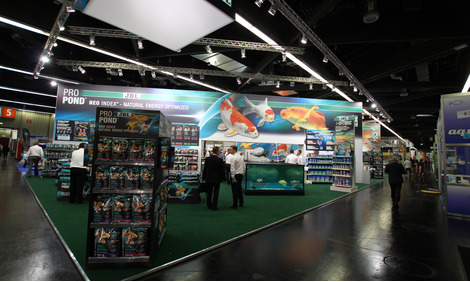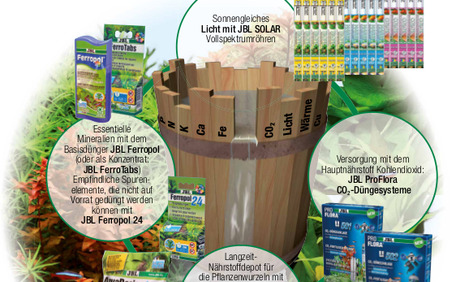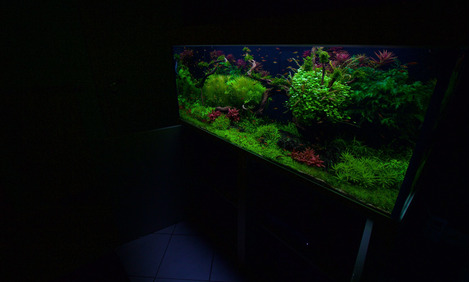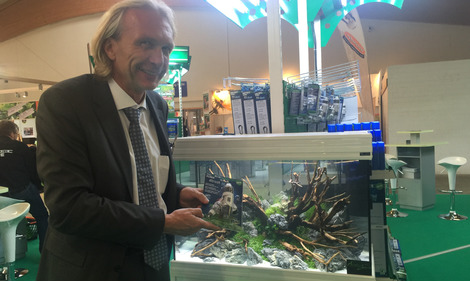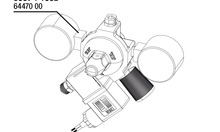Disposable or reusable CO2 cylinder?
There are 2 different cylinder types: disposable cylinders that are disposed of and recycled after emptying and reusable cylinders that can be refilled again and again. Many pet shops and gas companies can carry out the refilling. If you, for example, live in a region where refilling is a problem, the disposable cylinder would be an alternative. Should the refilling situation improve, you can always convert the disposable pressure reducer into a reusable pressure reducer in 2 minutes by unscrewing the adapter (JBL PROFLORA ADAPT u-m). Aquarists who live on islands, for example, are sometimes not allowed to transport filled reusable cylinders on the ferry or plane. Disposable cylinders are then sometimes allowed!
The size of the cylinder often depends on the cabinet in which the CO2 storage cylinder is to be placed: A 500 g disposable bottle is only 31 cm high (plus pressure reducer = 37 cm), a 500 g reusable bottle with stand is already 43 cm high and a 2000 g bottle 45.5 cm high. Basically, of course, a larger cylinder is an advantage, because it simply needs to be replaced or refilled less frequently.
TÜV inspection of the CO2 cylinders:
All reusable CO2 cylinders must be inspected regularly, every 10 years, by the TÜV (at least in Germany). On the cylinder you will always find, but sometimes badly legibly, the date of the last TÜV inspection and sometimes the year of the next inspection.
JBL PROFLORA 3 x u500
CO2 disposable storage cylinder (pack of 3)
PROFLORA CO2 CYLINDER 500 U 3x
- Ideal CO2 fertiliser supply for fast and slow growing plants
- Easy to install: screw pressure regulator fitting with internal thread onto external storage cylinder thread (M10x1).
- Disposable cartriges, ready-filled with carbon dioxide. Not refillable, but recyclable
- Maximum safety: free-standing disposable storage cylinders, tested to 165 bar. Total height with pressure reducer: 37 cm
- Package contents: 3 disposable cylinders, each filled with 500 g CO2, height of each cylinder: 31 cm, Ø 7.5 cm
You may also be interested in
JBL PROFLORA 3 x u500
Properties
| Animal species: | Arowana, Axolotl, Barbels, Bettas, Bichirs/reedfish, Blowfish, Catfish, Cichlids (South America), Corals, Crayfish, Danions, Discus, Dwarf shrimps, Flowerhorn, Gobies, Goldfish, Gouramis, Guppy, Juvenile fish, Killifish, Livebearers, Loaches, Mussels, Panchaxes, Rainbowfish, Snails, Spiny eels, Tetra, Veiltails, freshwater butterflyfish |
| Animal size: | For all animal sizes |
| Animal age group: | All aquarium fish |
| Volume habitat: | 400 L |
| Material: | metal (steel) |
| Colour: | green / black |
| Transport conditions: | Protect from direct sunlight during storage and transport and ensure good ventilation. |
Electronic label / illuminant
| Mercury: | No |
| Dimmable: | No |
Technical Data
No, because this can lead to the destruction of your pressure reducer. To ensure safe operation, all storage cylinders should only be operated upright. Never operate them in a lying position or upside down.
The cylinder pressure of 50 – 60 bar, depending on the room temperature, remains constant until the cylinder is almost completely empty.
You can read the tare weight on label of the u500 CO2 cylinder. According to this a full u500 CO2 cylinder weighs 1140 g tare + 500 g filling.
You can dispose of the empty cylinder as household waste or by taking it to scrap-metal recycling. It is important that the cylinder is completely empty.
The rapid drop in the cylinder pressure shortly before the end of the charge does not constitute grounds for complaint, and instead, is normal and unavoidable from a technical standpoint.
Reason: The cylinder is filled approximately halfway with liquid carbon dioxide. You remove gaseous CO₂ from the cylinder; the corresponding share of the liquid CO₂ passes to the gaseous phase; the pressure remains constant. It isn’t until less CO₂ passes from the liquid phase to the gaseous phase that the cylinder pressure begins to drop.
This means your system is functioning normally.
